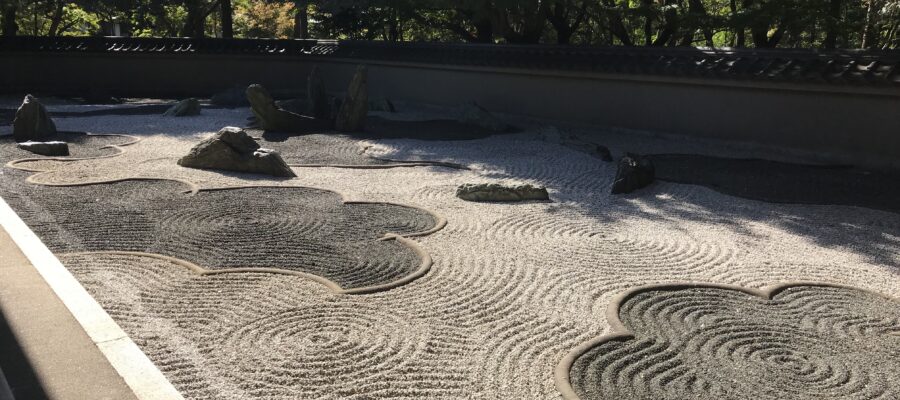なかなか入れなかった寺院
東福寺塔頭寺院の龍吟庵。何度か東福寺を訪れていますが、いつも閉まっています。公開日を調べ、京都出張を合わせて、ようやく見学することができました。東福寺の方丈の更に奥に入り、偃月橋を渡って入口まで来ました。
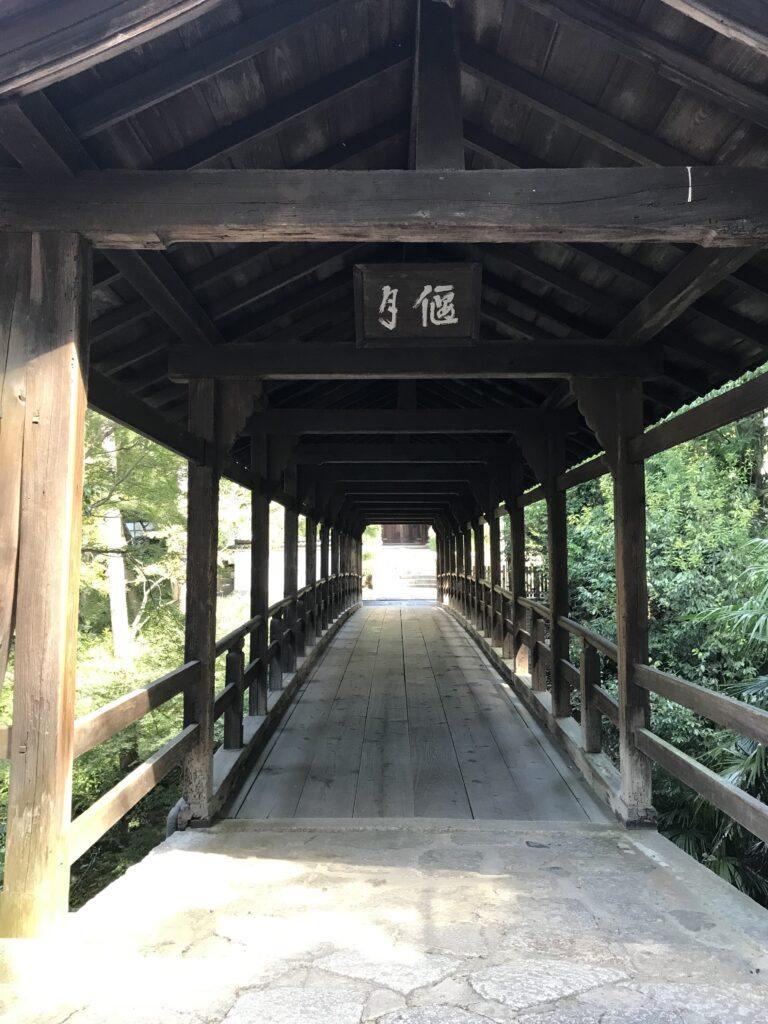
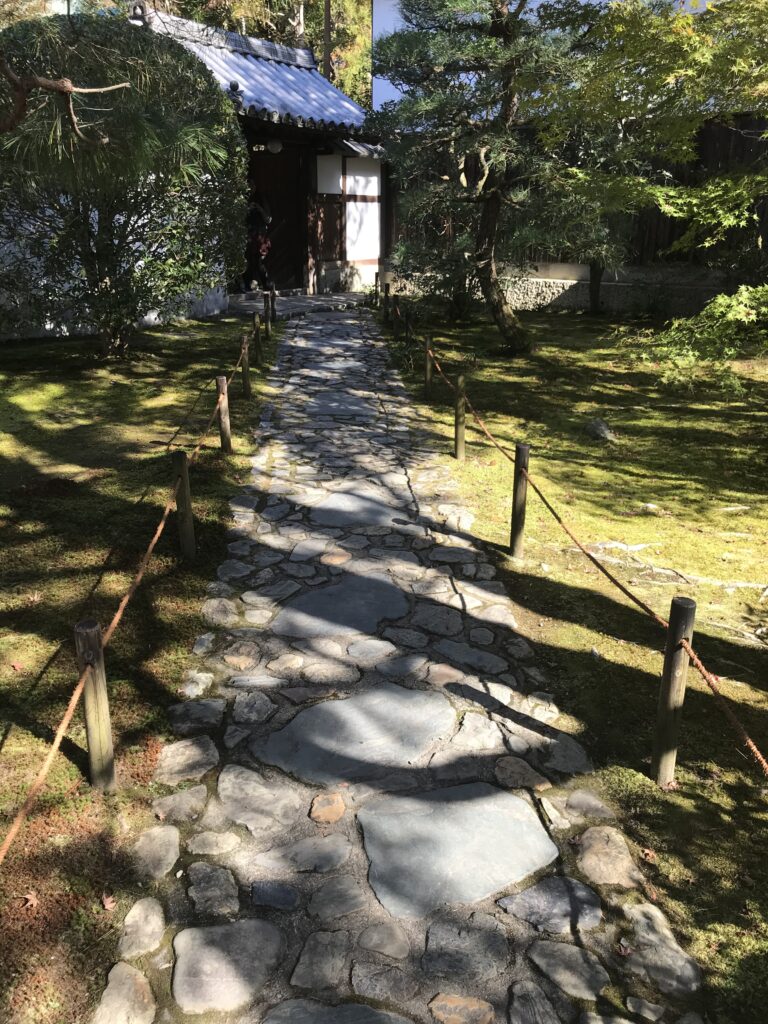
無の庭
お寺の案内の方に、日本最古の方丈建築である国宝の方丈を説明いただきました。書院造と寝殿造の手法が融合した建築様式で、扁額として足利義満が書いた「龍吟庵」が掲げられています。この方丈の正面に南庭「無の庭」があります。その名の通り、横に引いた砂紋の白砂があるだけで何もありません。これで、お金取るの?と思わずツッ込みを入れてしまいます。
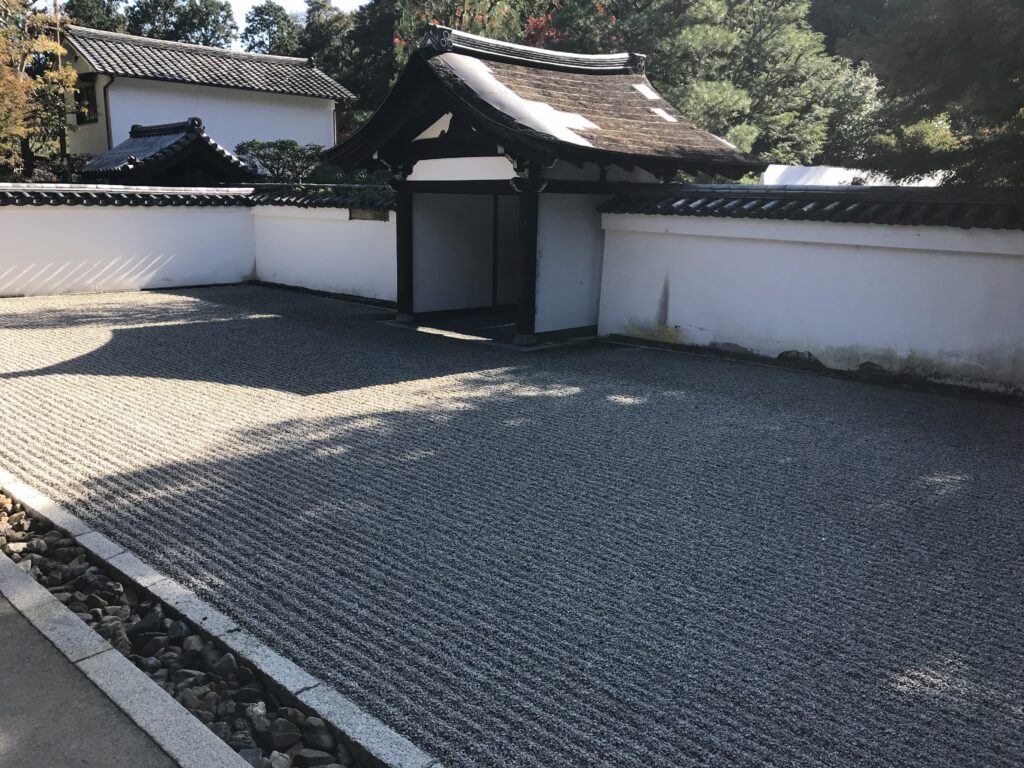
龍の庭
ここは南庭、西庭「龍の庭」、東庭「不離の庭」の3つがあり、いずれも名作庭家、重森三玲さんの作庭です。龍の庭を眺めると、龍が海中から黒雲を得て昇天する姿が、石組により表現されています。青石により2本の角が生えた龍の頭を中央に配置して、白砂は海、黒砂は黒雲、そして竹垣は稲妻模様を表しています。これは実に写実的で外国人の方にも受けると感じました。
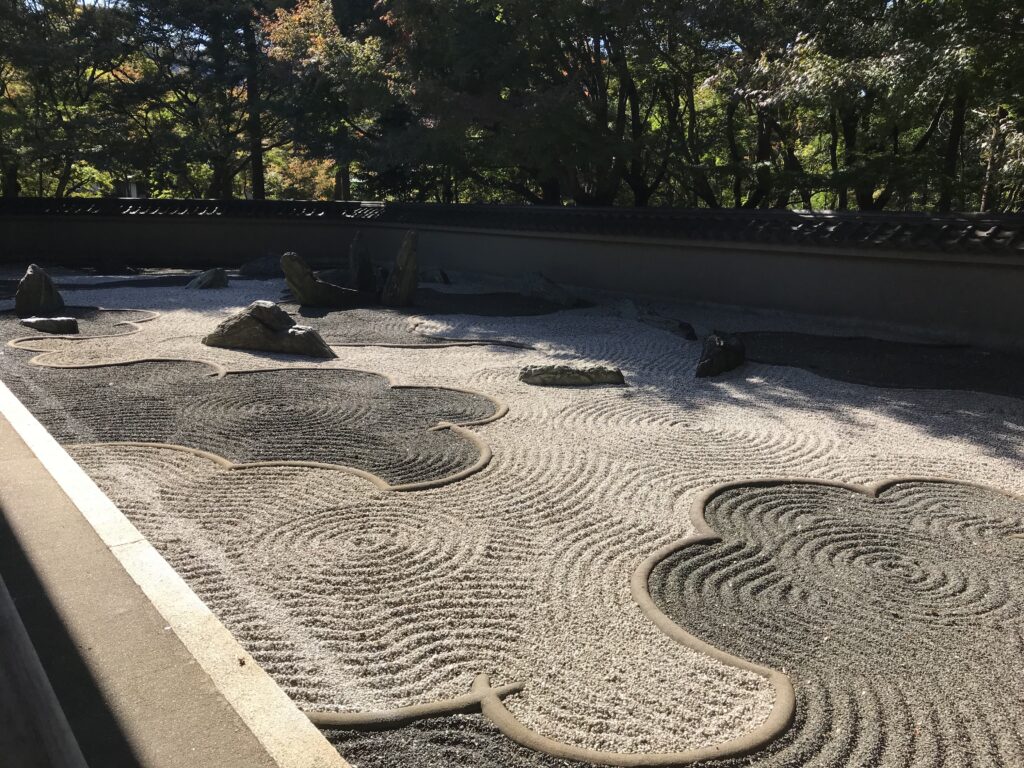
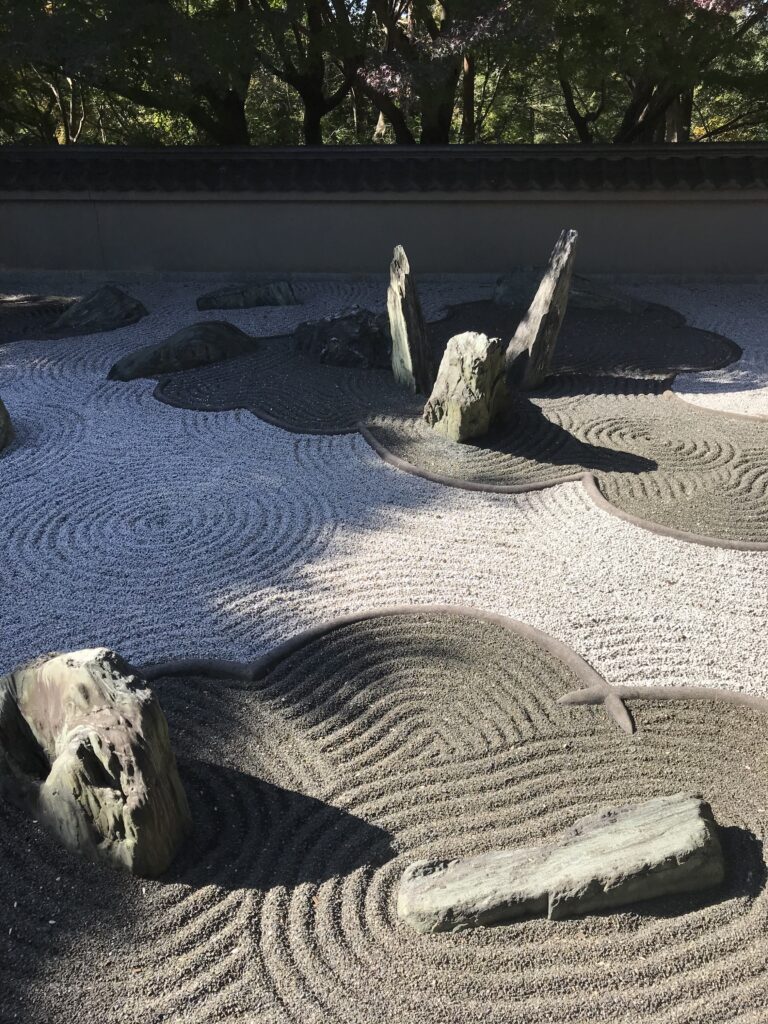
不離の庭
そのまま歩いて不離の庭に移ります。太陽のかげんで見にくいのですが、真ん中の石を住持であった大明国師と見立て、その両隣の石2つが国師を守る犬で、その回りの石が狼であり、国師の幼少の頃の経験をテーマに作庭されています。話を知らないと、見ただけでは、離れず狼から守ってくれた2匹の犬というテーマを理解できないですね。
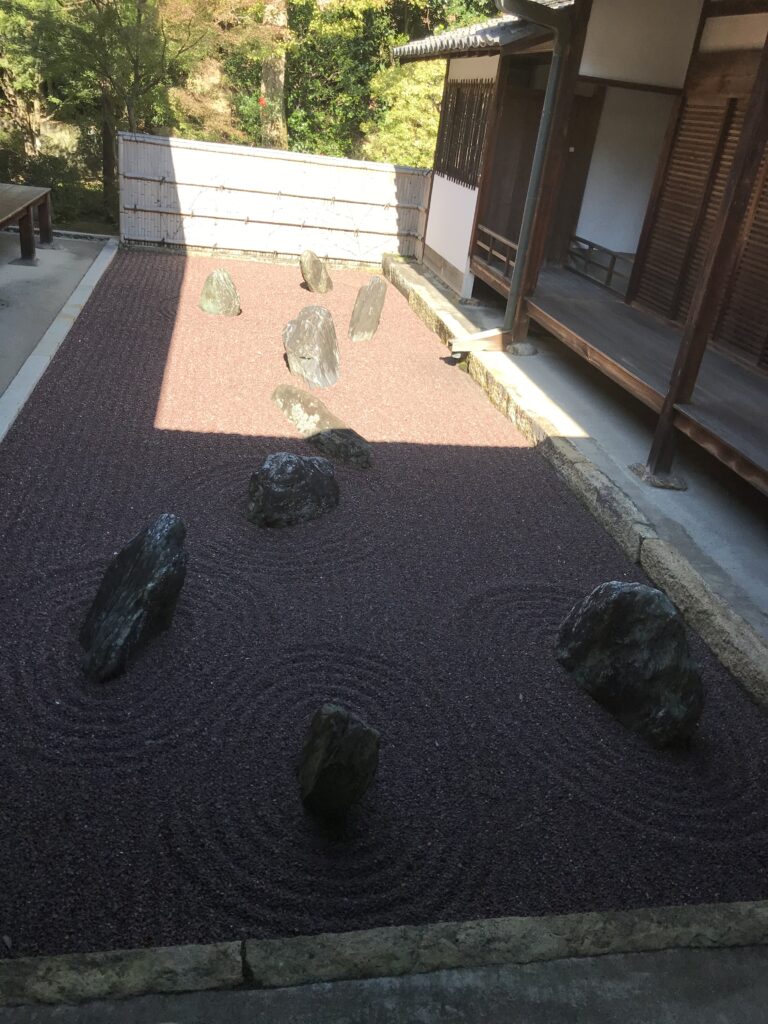
方丈を取り囲んだ3つの庭でしたが、それぞれに表情が異なり、楽しむことができました。枯山水に隠された作庭家の意図を読み取ることが、少しずつ面白くなってきました。(完)
龍吟庵の御朱印
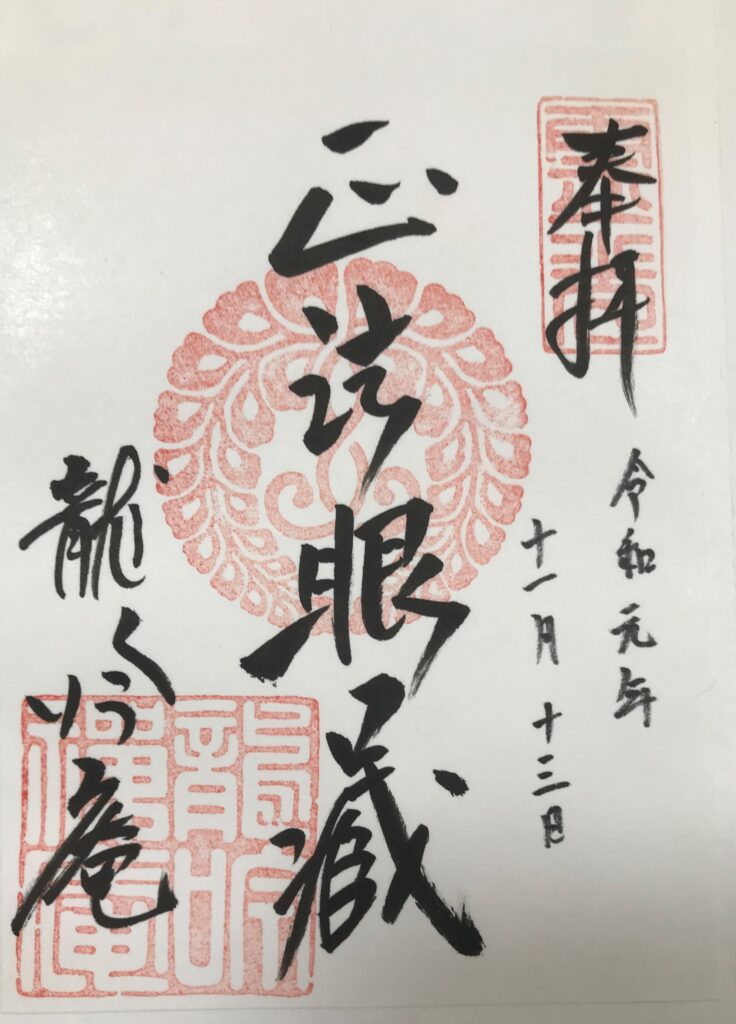
龍吟庵が紹介されている書籍
烏賀陽百合さん「しかけにときめく『京都名庭園』」に龍吟庵の庭が紹介されています。
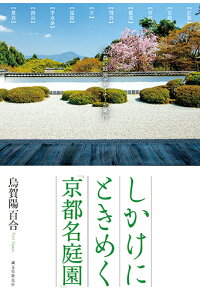
しかけにときめく「京都名庭園」 京都の庭園デザイナーが案内 [ 烏賀陽 百合 ]
価格:1,760円
(2021/5/3 10:53時点)
感想(0件)
Ryuginan Temple (English)
A temple that was hard to get into.
Ryuginan, a sub-temple of Tofukuji Temple. I have visited Tofukuji Temple several times, but Ryuginan Temple was always closed. I looked up the open days and was finally able to visit the temple on a business trip to Kyoto. I walked further into Tofukuji Temple’s Hojo and crossed the Engetsu Bridge to reach the entrance.
Garden of Nothingness
The temple guide explained to me about the oldest Hojo building in Japan, which is a national treasure. It is a fusion of Shoin-zukuri (Samurai style house) and Shinden-zukuri (Aristocrat style house) architectural styles, with the inscription “Ryuginan” written by Ashikaga Yoshimitsu (The 3rd Shogun of Muromachi Shogunate). In front of the Hojo is the southern garden called “Mu-no-niwa (Garden of Nothingness)”. As the name suggests, there is nothing but white sand with sand patterns drawn horizontally. Do they charge money for this? I couldn’t help but ask myself.
Dragon Garden
There are three gardens here: the south garden, the west garden “Dragon Garden,” and the east garden “Garden of Immortality,” all created by the famous gardener Mirei Shigemori. Looking at the Garden of the Dragon, I can see the image of a dragon ascending from the sea with black clouds, which is expressed by the masonry. The white sand represents the sea, the black sand represents the black clouds, and the bamboo fence represents the lightning pattern. That was very realistic and I felt it would be popular among foreigners.
Garden of the Immortality
I walked on to the garden of inmmortality. It’s hard to see because of the sun, but the stone in the middle was made to look like the abbot of the temple, the two stones on either side of him were dogs protecting him, and the stones around them were wolves, based on the theme of the abbot’s childhood experiences. If you don’t know the story, you can’t understand the theme of the two dogs that never left and protected him from the wolves just by looking at them.
Although there were three gardens surrounding the Hojo, each one had a different expression and I enjoyed them all. It became more and more interesting to understand the intentions of the gardeners behind the dry landscape garden. (End)
Temple Ryuginan (Français)
Un temple dans lequel il était difficile d’entrer.
Ryuginan, un sous-temple du temple Tofukuji. J’ai visité le temple Tofukuji plusieurs fois, mais le temple Ryuginan était toujours fermé. J’ai cherché les jours d’ouverture et j’ai finalement pu visiter le temple lors d’un voyage d’affaires à Kyoto. Je me suis rendu plus loin dans le Hojo du temple Tofukuji et j’ai traversé le pont Engetsu pour atteindre l’entrée.
Le jardin du néant
Le guide du temple m’a expliqué le plus ancien bâtiment Hojo du Japon, qui est un trésor national. Il s’agit d’une fusion des styles architecturaux Shoin-zukuri (maison de style Samouraï) et Shinden-zukuri (maison de style Aristocrate), avec l’inscription “Ryuginan” écrite par Ashikaga Yoshimitsu (le 3ème Shogun du Shogunat Muromachi). Devant le Hojo se trouve le jardin sud appelé “Mu-no-niwa (jardin du néant)”. Comme son nom l’indique, il n’y a rien d’autre que du sable blanc avec des motifs de sable dessinés horizontalement. Est-ce qu’ils font payer pour ça ? Je n’ai pas pu m’empêcher de me demander.
Jardin du Dragon
Il y a trois jardins ici : le jardin sud, le jardin ouest “Jardin du dragon” et le jardin est “Jardin de l’immortalité”, tous créés par le célèbre jardinier Mirei Shigemori. En regardant le jardin du Dragon, je peux voir l’image d’un dragon qui monte de la mer avec des nuages noirs, qui est exprimée par la maçonnerie. Le sable blanc représente la mer, le sable noir représente les nuages noirs, et la barrière de bambou représente le motif des éclairs. C’était très réaliste et j’ai senti que cela serait populaire parmi les étrangers.
Jardin de l’Immortalité
J’ai marché jusqu’au jardin de l’immortalité. C’est difficile à voir à cause du soleil, mais la pierre du milieu a été faite pour ressembler à l’abbé du temple, les deux pierres de chaque côté de lui étaient des chiens qui le protégeaient, et les pierres autour d’eux étaient des loups, selon le thème des expériences de l’enfance de l’abbé. Si vous ne connaissez pas l’histoire, vous ne pouvez pas comprendre le thème des deux chiens qui ne l’ont jamais quitté et qui l’ont protégé des loups juste en les
Bien qu’il y ait trois jardins autour du Hojo, chacun avait une expression différente et je les ai tous appréciés. Il est devenu de plus en plus intéressant de comprendre les intentions des jardiniers derrière le jardin paysager sec. (Fin)
